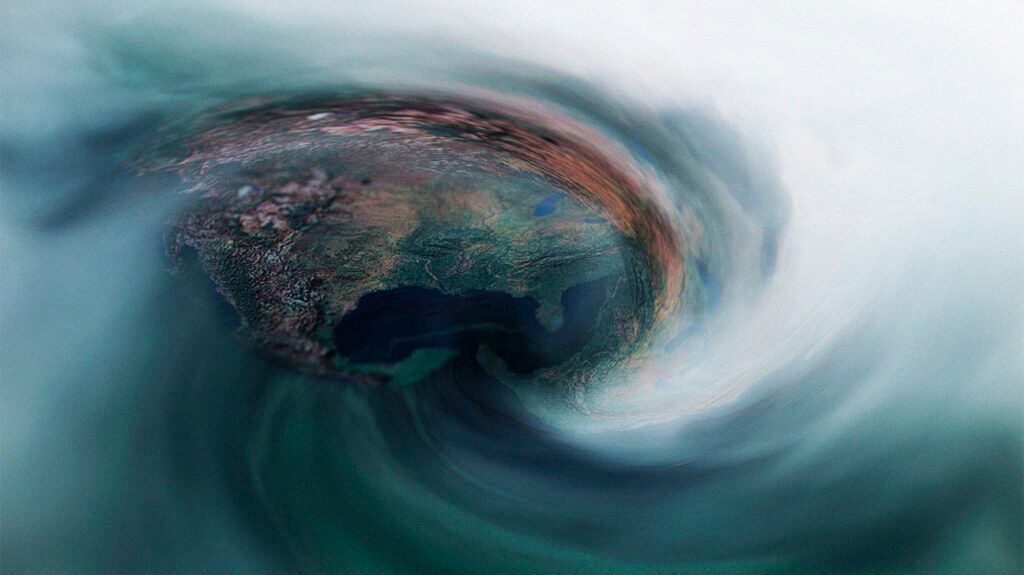For some people, weather changes may increase the chances of having a migraine episode. Migraine forecasts aim to identify those changes in advance, but it is unclear if they are reliable.
Many people report that weather changes are a migraine trigger for them. However, no research indicates whether migraine forecasts work or whether they can help people avoid migraine episodes.
This article explores what migraine forecasts are, how they might help, which types of weather might exacerbate migraine, and tips for reducing weather-related symptoms.

Weather changes are a potential trigger for
Migraine forecasts claim to inform people when these weather shifts will take place. There are many websites and mobile apps that offer this service. They may provide information on:
- barometric pressure changes
- temperature
- humidity
- wind
- other meteorological factors
These forecasts aim to empower those with migraine to take preventive measures to reduce their risk of a migraine episode.
While migraine forecasts sound useful, no research supports their effectiveness. There is no data on their reliability or accuracy or how often they help people to prevent migraine episodes. This does not necessarily mean they cannot help; it only means there is no evidence to support them.
However, the American Migraine Foundation (AMF) points out that it is not always possible to weather triggers. Even if a person stays indoors, they may be unable to avoid changes in barometric pressure, temperature, or humidity.
Some people may be able to travel away from home or move to a place with a different climate, but this is only feasible for some people. As a result, the utility of migraine forecasts for the general population is unclear.
Migraine forecasts may have some use as monitoring tools. If a person uses them in combination with a symptom diary, they may help people spot patterns in migraine frequency and determine if weather is a common factor.
The AMF also states that migraine forecasts may help people know when to take migraine medications. However, taking unnecessary migraine medication could result in a medication overuse headache.
Learn about some apps to help track migraine episodes and triggers.
According to an AMF survey, approximately one-third of people with migraine believe that weather influences their migraine headaches. However, a
In part, this is because many factors can lead to migraine symptoms, making it difficult to determine how much the weather can affect them.
This does not mean that weather does not influence migraine frequency but that it is difficult for scientists to prove a direct cause-and-effect relationship.
Another factor is human behavior, which can change when the weather does. For example, in colder or darker weather, people may sleep more or eat different foods than usual.
Conversely, in warm months, people may sleep less, get more exposure to bright light, or be more likely to experience dehydration. Any of these could be
Learn more about barometric pressure headaches and migraine.
No single type of weather is worse for all people with migraine, as different types of weather seem to affect people in different ways. However, some of the triggers people commonly report include:
- high temperatures
- high humidity
- low barometric pressure, or fluctuations in barometric pressure
- bright sunlight
Fluctuations in pressure and temperature happen everywhere in the world, but places with more extreme weather may have more significant shifts.
Learn more about migraine headaches due to heat.
Similarly to weather that worsens migraine, no type of weather will suit all people with migraine equally well. Some individuals may find relief in stable weather patterns with consistent temperature and low humidity. However, preferences vary widely, and what works for one person may not work for another.
In the absence of universal guidelines, keeping a personal migraine diary may help people to identify patterns.
While it is not possible to control the weather, people can take steps to reduce their risk of weather-related migraine, particularly when they know a change in weather is coming up. The AMF recommends focusing on factors a person can control, such as:
- Hydration: For some, dehydration is a migraine trigger. Stay adequately hydrated, especially during periods of extreme weather.
- Sleep routine: Too much or too little sleep
can contribute to migraine episodes. Aim for a consistent sleep schedule where possible. If seasonal changes make this more difficult, consider taking steps to make sleep easier, such as installing blackout blinds. - Stress: If weather shifts are imminent, a person may feel stressed about the prospect of having a migraine episode. However, this could create a vicious cycle, as stress can trigger migraine. It may help to focus on relaxing or enjoyable activities wherever possible. Some may find meditation or deep breathing exercises beneficial.
- Medications: It may be beneficial to carry abortive migraine medications when out and about during weather changes in case symptoms begin.
Other ways to reduce the impact of the weather on migraine include wearing sunglasses to reduce glare. However, no research shows how effective this is.
Migraine forecasts aim to give people with migraine an insight into upcoming weather changes that could make migraine headaches more likely. However, there are no studies evaluating if they are helpful.
Some people may find that migraine forecasts help them to identify patterns in their symptoms. Since it is difficult to avoid the weather, knowing about shifts in weather may not always help a person prevent migraine. Believing there is a risk of migraine may cause stress, which can trigger a migraine episode.
Ways to reduce migraine frequency include keeping a migraine diary and avoiding known triggers.
Anyone who experiences debilitating migraine symptoms that interfere with work or relationships might consider speaking with a doctor.
Headache and migraine resources
To discover more evidence-based information and resources for headaches and migraine, visit our dedicated hub.
